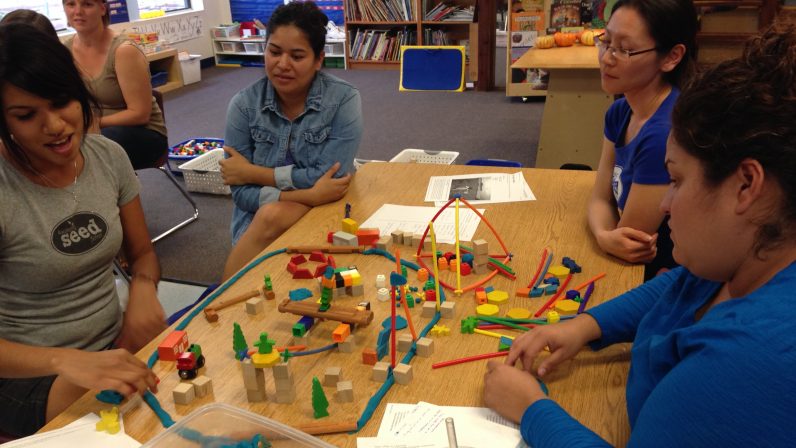A few weeks ago I wrote about the value of play in children’s lives. The blog was focused around an article that indicated the importance of play for helping children gain social skills, develop curiosity and creativity, and practice what it will be like to take on various roles as a grown-up (https://www.awakeningseedschool.org/2013/09/let-the-children-play/). As a staff we often take on articles such as this one and see what we can do with them. One of the most recent examples was a year ago when we read an article published by NAEYC about best practices around food with children. That single article and the discussions that followed resulted in the seedfood website (http://seedfood.awakeningseedschool.org).
The past two Mondays, we gathered, first the lead teachers and then the assistants and support staff, to discuss Peter Gray’s article (http://www.aeonmagazine.com/being-human/children-today-are-suffering-a-severe-deficit-of-play/). After reviewing the main points of the article, teachers were placed in small groups and given a container of play dough, small blocks, cubes, plastic connector sticks, and a few other random manipulatives from the K-1 class. Each group was assigned the task of collaboratively creating a model play space, keeping in mind the the space’s purpose, age of the children intended to play there, materials used and their impact on the environment. Within the group all participants were asked to each use their voice to express their ideas and one aspect of the plan for the proposed space. As they worked and played with the materials, they were invited to consider the following:
• How do we already incorporate play in our curriculum to facilitate learning?
• How can we extend how we use play to foster learning and critical thinking?
For the next half hour, lively conversations while “playing” with materials and ideas produced everything from plans for a mud kitchen, a multi-level tree house, portable building materials for forts and structures, a bridge to go over and tunnel to go under, and tracks for bikes. Creativity coupled with a chance to toss around wild ideas opened the doors of possibility. Granted, most of these ideas will go through many revisions before they are actualized, and some won’t ever come to be. Still, if even a few lead to innovations to promote play, it was a valuable process. The process was valuable in other ways, too. It gave the staff practice with listening to and feeding off of each other’s ideas. There were opportunities to negotiate, clarify and consider possibilities. And they had time to slow down and play together. One of the main points of the article was that creativity can’t be taught, that we have to let it bloom. Teachers who experience this process first hand are more likely to give their students the same kind of learning adventures. At a time when so many children are shortchanged of time to play, our Seed students are fortunate to have teachers who also value and know how to play.

